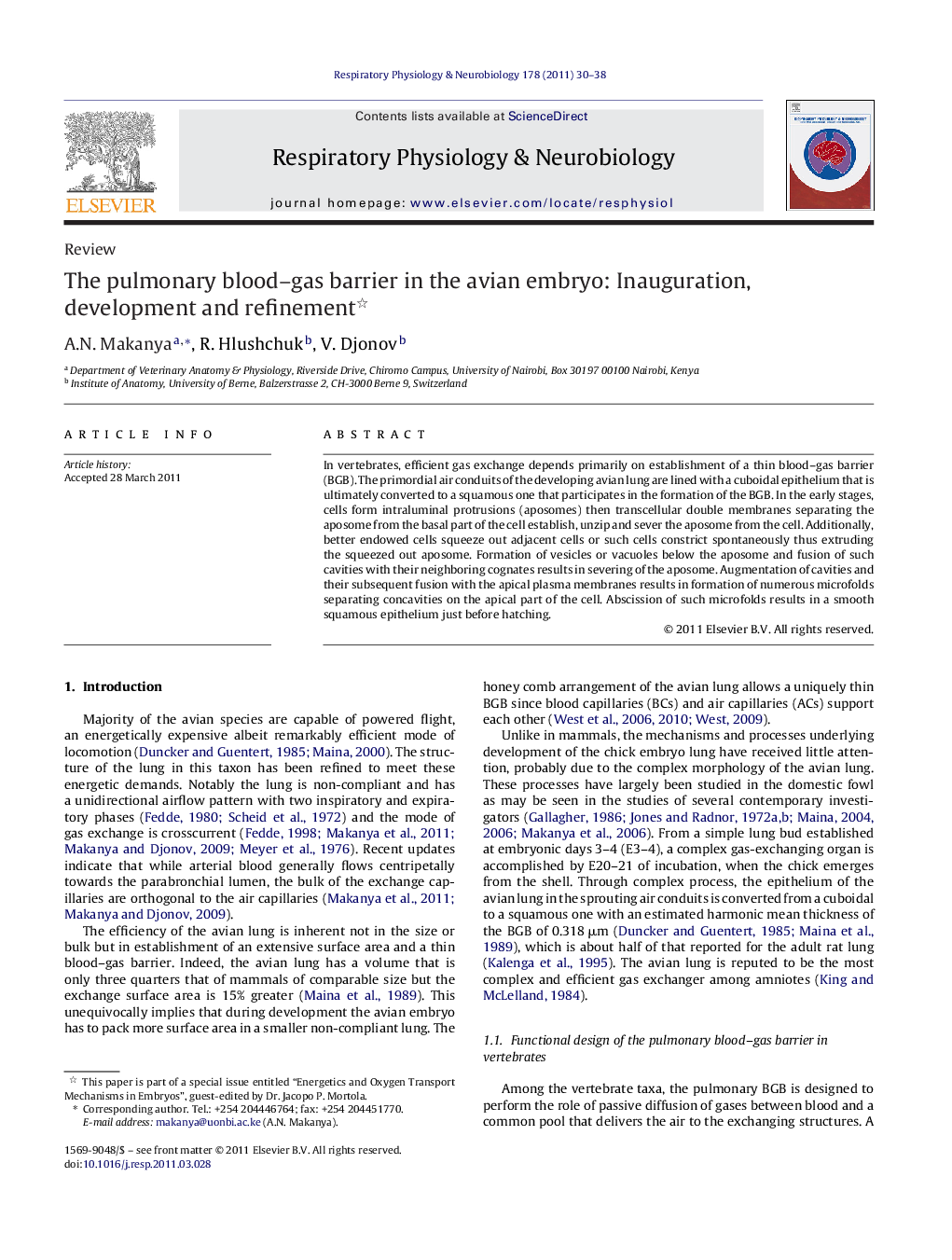| کد مقاله | کد نشریه | سال انتشار | مقاله انگلیسی | نسخه تمام متن |
|---|---|---|---|---|
| 2847497 | 1167370 | 2011 | 9 صفحه PDF | دانلود رایگان |

In vertebrates, efficient gas exchange depends primarily on establishment of a thin blood–gas barrier (BGB). The primordial air conduits of the developing avian lung are lined with a cuboidal epithelium that is ultimately converted to a squamous one that participates in the formation of the BGB. In the early stages, cells form intraluminal protrusions (aposomes) then transcellular double membranes separating the aposome from the basal part of the cell establish, unzip and sever the aposome from the cell. Additionally, better endowed cells squeeze out adjacent cells or such cells constrict spontaneously thus extruding the squeezed out aposome. Formation of vesicles or vacuoles below the aposome and fusion of such cavities with their neighboring cognates results in severing of the aposome. Augmentation of cavities and their subsequent fusion with the apical plasma membranes results in formation of numerous microfolds separating concavities on the apical part of the cell. Abscission of such microfolds results in a smooth squamous epithelium just before hatching.
Journal: Respiratory Physiology & Neurobiology - Volume 178, Issue 1, 31 August 2011, Pages 30–38